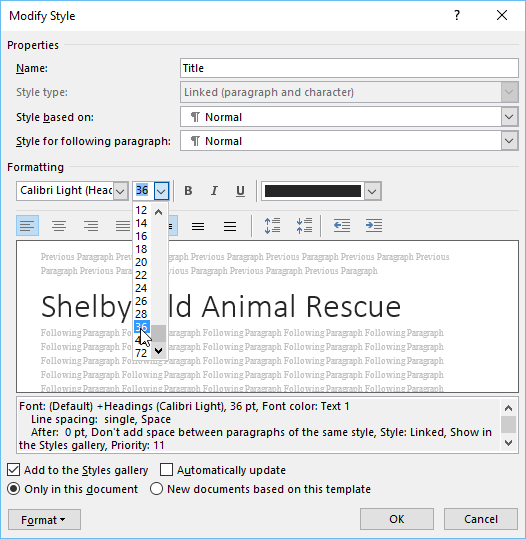
HOW TO PUT HEADING STYLES IN WORD HOW TO
Often, your style guide or university will offer specific directions on how to approach the capitalization, formatting, and sequencing of headings, so it’s wise to check before you start writing them. They should also have parallel structure. For instance, “Section 2.2” should get the same treatment as “Section 4.1”. Headings at the same level should be formatted the same. Capitalization, formatting and sequencingĪt the outset, make a plan for how you will deal with matters of capitalization, formatting and sequencing of headings. However, if you don’t need the jargon to give a specific idea of your content, then avoid it. That’s fine as long as you keep your reader’s knowledge level in mind. Instead of closing a chapter with “Summary,” for example, try making the heading little more descriptive: “Summary of X.” Technical terms in headingsĭocuments in fields that rely heavily on jargon and technical language will contain headings that might not be clear to every reader. No two sections should focus on the exact same content, so no two headings should be identical.

The examples below show one non-descriptive heading and three descriptive headings that provide the reader with much more information. The main goal of a heading is to inform the reader of what content they can find in that section, so make your headings as descriptive as possible. These headings help readers find the exact information they’re looking for. Lower-level headings should use more specific terminology to help clarify the content of the section. One word is clear enough because everyone already knows what happens in an introduction chapter – nothing more needs to be said. This is because higher-level headings cover more general content and provide an overview. Higher-level headings often make do with a single word (e.g.

However, each heading should be as concise as possible – a good rule of thumb is to limit the heading length to one line. Headings should be as long as it takes to clearly communicate the content of the sections they head. Read more in our article on writing good titles in academic writing. Capitalization, formatting and sequencingĪlthough heading and titles are similar, they are distinct: A title leads the entire document and captures its content in one or two phrases a heading leads only a chapter or section and captures only the content of that chapter or section.Capitalizing chapter and section headings.


 0 kommentar(er)
0 kommentar(er)
